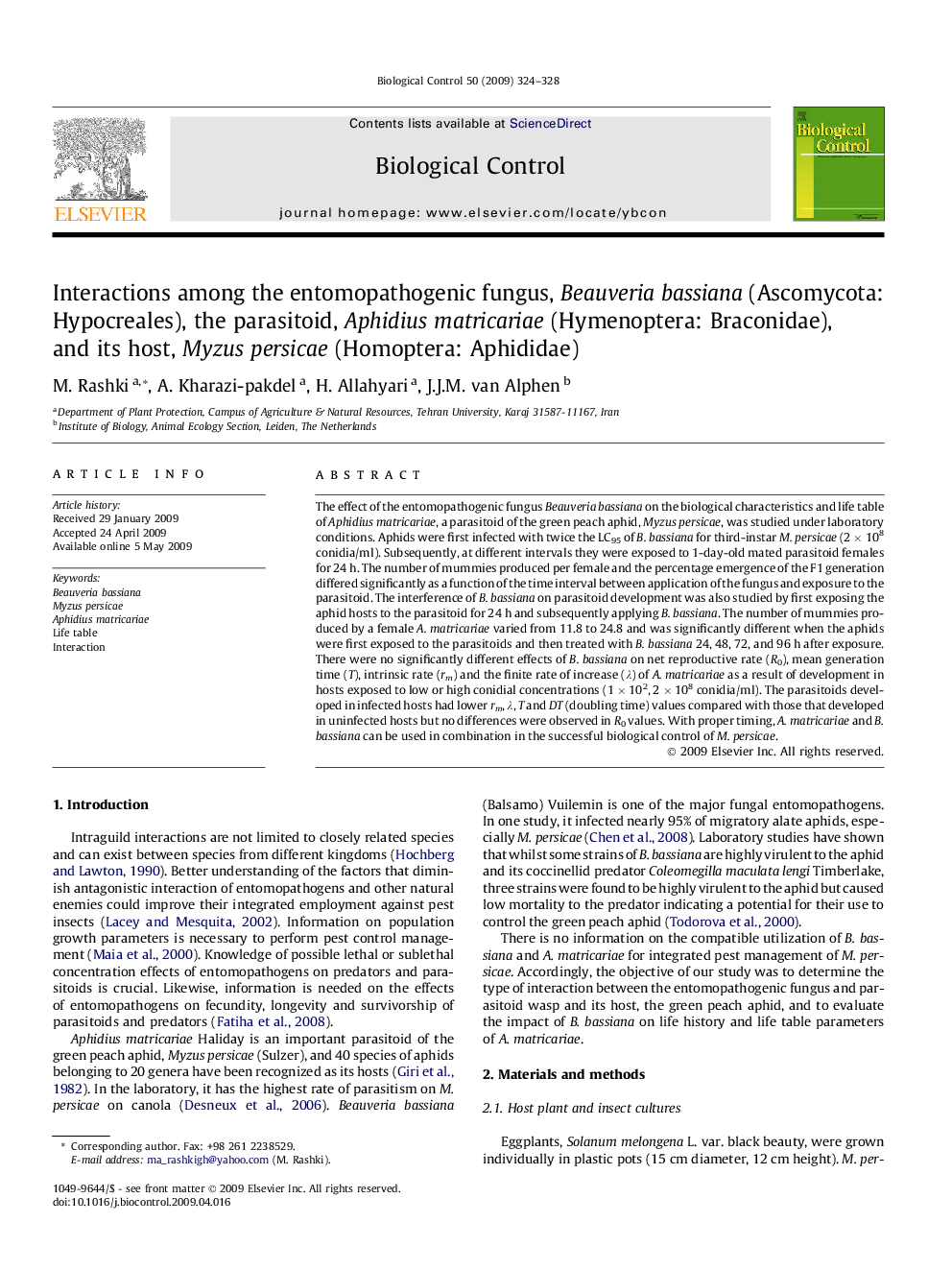| Article ID | Journal | Published Year | Pages | File Type |
|---|---|---|---|---|
| 4504594 | Biological Control | 2009 | 5 Pages |
Abstract
The effect of the entomopathogenic fungus Beauveria bassiana on the biological characteristics and life table of Aphidius matricariae, a parasitoid of the green peach aphid, Myzus persicae, was studied under laboratory conditions. Aphids were first infected with twice the LC95 of B. bassiana for third-instar M. persicae (2 Ã 108 conidia/ml). Subsequently, at different intervals they were exposed to 1-day-old mated parasitoid females for 24 h. The number of mummies produced per female and the percentage emergence of the F1 generation differed significantly as a function of the time interval between application of the fungus and exposure to the parasitoid. The interference of B. bassiana on parasitoid development was also studied by first exposing the aphid hosts to the parasitoid for 24 h and subsequently applying B. bassiana. The number of mummies produced by a female A. matricariae varied from 11.8 to 24.8 and was significantly different when the aphids were first exposed to the parasitoids and then treated with B. bassiana 24, 48, 72, and 96 h after exposure. There were no significantly different effects of B. bassiana on net reproductive rate (R0), mean generation time (T), intrinsic rate (rm) and the finite rate of increase (λ) of A. matricariae as a result of development in hosts exposed to low or high conidial concentrations (1 Ã 102, 2 Ã 108 conidia/ml). The parasitoids developed in infected hosts had lower rm, λ, T and DT (doubling time) values compared with those that developed in uninfected hosts but no differences were observed in R0 values. With proper timing, A. matricariae and B. bassiana can be used in combination in the successful biological control of M. persicae.
Related Topics
Life Sciences
Agricultural and Biological Sciences
Agronomy and Crop Science
Authors
M. Rashki, A. Kharazi-pakdel, H. Allahyari, J.J.M. van Alphen,
